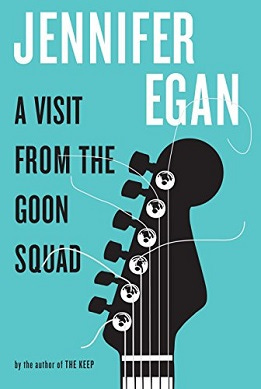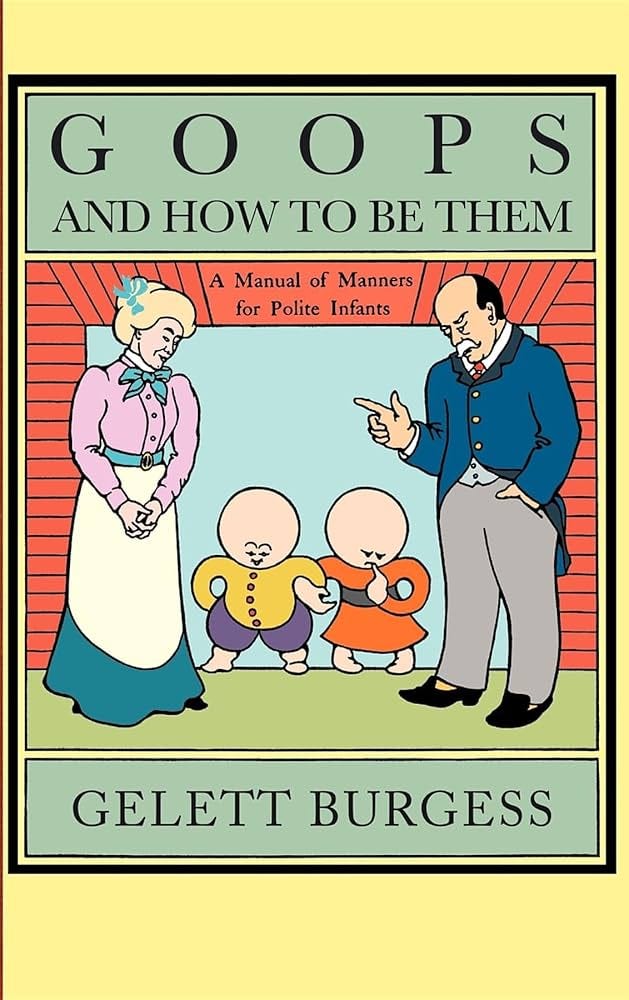I’ve been listening to the audiobook of Character Limit: How Elon Musk Destroyed Twitter, written by New York Times technology reporters Kate Conger and Ryan Mac and narrated by Edoardo Ballerini. It’s a riveting and revolting saga — and a revealing one, even for those of us who followed the fall of Twitter (now X) in real time. Conger and Mac used court documents and interviews with ex-Twitter employees to create a detailed account of the $44 billion acquisition that ushered in the Age of X. (They were not, however, granted access to the title character, whose sole response to the book has been a pair of laughing-crying emojis.1)
One word keeps recurring in the narrative: goons. That’s the name “skeptical Twitter employees” assigned to the Musk allies who made their first appearance at the company’s San Francisco headquarters during a Halloween party on October 27, 2022 — the day the sale was to close:
They meandered through the halls as they awaited instructions, the glares of Twitter workers burning into the back of their necks. Some of them, engineers who came from Musk’s other companies including Tesla and SpaceX, felt awkward invading Twitter, but they knew they served the whims of one man. In a brief meeting with the billionaire that morning, some of the engineers received a clear directive from their boss.
“Make sure the site doesn’t go down,” Musk said. “Make sure no one does anything.”
Goons crops up frequently on subsequent pages, and I kept thinking about the word, whose dictionary definitions include “a stupid person,” “an enforcer,” and “a thug hired to intimidate or harm opponents.” It had the ring of antiquity, and also of 20th-century cartoons and gangster films. Which was it?
A little of both, it turns out. But mostly the latter.
Goon first appeared in print in 1921, in an article by the American writer and editor Frederick Lewis Allen in Harper’s magazine titled “The Goon and His Style.”2 Here’s how Allen put it:
A goon is a person with a heavy touch as distinguished from a jigger, who has a light touch. [...] Washington was a goon, whereas Lincoln was a jigger. … Most Germans are goons; most French, jiggers. … Mind you, it would be misleading to say that goonishness consists of a lack of a sense of humor. I know many goons who have a perfectly standardized sense of humor. … What they lack is the playful mind.
What inspired Allen to come up with goon? Possibly he’d seen similar-sounding old words like gony (a 16th-century word for a simpleton) or goonie (a 19th-century sailors’ word for the albatross).3 Furthermore, Green’s Dictionary of Slang informs us that since at least 1904 gooney had been a word meaning “fool” in Cape Cod (U.S.) dialect.
It was a nice coinage effort on Allen’s part, but the public shrugged. Goon lapsed into obscurity for the next thirteen years and jigger — which Allen may have intended to mean “dancer” — was never heard from again apart from cocktail lingo.
Then, on December 10, 1933, E.C. Segar, the inventor of “Thimble Theatre” — home of Popeye and Olive Oyl and friends — introduced the world to some characters he called the Goons, whose leader was Alice the Goon. And this time around, goon stuck.
I was delighted to discover a wiki called Popeye the Sailorpedia that filled me in on Goon lore:
Goons are large, hulking, light-skinned humanoids with pronounced upper bodies contrasted by their thin waists, skinny arms and skinny legs. They also have round bald heads and big-noses [sic]. This appearance is the standard for all Goons, with no unique traits among individuals, and even the males and females are indistinguishable.
Goons “were possibly an alien species that originated from the Moon, having originally been Moon Goons which instantly became Earth Goons upon arriving on Earth. Moon Goons and Earth Goons would remain separate races seemingly unaware of each other. Eventually, Goons would go on to inhabit and colonize an uncharted island which would become Goon Island.”
As for Alice:
Then-unnamed, and her gender unspecified, she was a minion of sorceress the Sea Hag. Her name and gender were given in the January 14, 1934 strip, after she had captured Wimpy. . . . After traveling to human society, she has learned to somewhat adapt to human ways with only a few difficulties and she would go on to grow a desire to be more feminine and well-dressed like human females. . . . Because of this, members of her tribe also began donning on [sic] human clothing thanks to their leader, allowing outsiders to not only tell difference between males and females, but individuals as well, however most Goons still prefer to wear only a little clothing unlike their fully dressed leader.
Segar’s Goons were stolid like Allen’s goons, yet also good-natured. But their big hairy arms may have given people ideas about strength and force. And so in the 1930s goon took on a new meaning thanks to that decade’s waves of labor unrest.
Here’s the OED’s earliest citation for this sense, from a 1938 entry in American Speech, the journal of the American Dialect Society:
In the Pacific Northwest we hear the word goon on every hand. Locally a goon is a member of a labor-union’s beef-squad; that is, a person of imposing physique and inferior moral and mental qualities who can be depended on to cow and frighten recalcitrant union-members.
Goon squads could also work for the other side, intimidating workers who wanted to join unions.
Budd Schulberg put goons into context in On the Waterfront, a 1955 novelization of his 1954 screenplay:
A step below them the local movers like Johnny F, then the lieutenants such as himself, then the goons and the sharks, the small operators, below them the body of regulars, the longshoremen and checkers and truckers who played ball, who helped to work the pilferage trick, and finally on the bottom below the bottom, the men who shaped up without an in, who took their chances, kicked back when they got too hungry to hold out any longer, lived mostly on loan-shark money they had to pay back at ten per cent a week . . .
Jennifer Egan appropriated “goon squad” for the title of her 2011 story collection.
I still haven’t read the book, so I’ll rely on Wikipedia’s explanation of the title:
“Goon squads” were originally groups of violent thugs sent to assault workers who tried to form labor unions. Later the term “goon” came to refer more generally to any violent thug, and this is where the book draws its central metaphor. In one story, a character named Bosco declares: “Time’s a goon, right?”, referring to the way that time and fate cruelly rob most of the book’s characters of their youth, innocence and success.
During World War II, American prisoners of war called German prison guards “goons.” That usage is now considered obsolete, although it has echoes in the usage by Twitter-soon-to-be-X (and ex-) employees.
One more thought about goon: It’s linked by sound (or even sound symbolism) to a bunch of words that suggest foolishness or messiness, almost all of them North American in origin.
Start with goo, “a viscous or sticky substance,” which we somehow got along without until about 1900, the date of its earliest documentation. Or, continuing alphabetically, goober (1862), a borrowing from Kikongo that literally means “peanut” and metaphorically means “yokel” or “simpleton.” A goof (1916) is a mistake; a goofus (1917) is a fool. (Anyone else remember Goofus and Gallant, the bad- and good-example boys in Highlights for Children? They’re still in the magazine.) Before Google was a search engine, google (1902) was an alternate spelling of goggle, “to stare at something.”
There’s also goop, which before it meant “sticky substance” (1918) and long before Gwyneth Paltrow made it the name of her “lifestyle brand” (2008)4 was the invention of the American humorist Gelett Burgess, who also coined “blurb.” Burgess’s instructional book for children, Goops and How to Be Them, was published in 1900; it taught etiquette by way of negative example.
The naughty Goops — “humanoid characters with enormous round heads who behaved disgracefully,” as Sadie Stein described them in a 2014 essay, making them sound a bit like E.C. Segar’s Goons — licked their fingers, licked their knives, pulled chairs out from under grownups, and misbehaved in other “disgusting” ways.
Give those Goops a few years, and they’re almost certain to mature into full-fledged, unreconstructed goons.
*
P.S. I know someone is going to bring up “The Goon Show,” the 1950s comedy program(me) that aired in the BBC and featured Spike Milligan and Peter Sellers. All I have to say about it is that I don’t know why they called it “The Goon Show.”
What. A. Putz.
Available as a PDF to Harper’s subscribers. Allen would begin working for Harper’s in 1923 and became the magazine’s editor-in-chief in 1941. He is perhaps best known as the author of two popular histories, Only Yesterday, about the 1920s; and Since Yesterday, about the Great Depression. I remember being enthralled by both books when I was in high school. I should try reading them again.
The title of the 1985 American adventure comedy film The Goonies refers to the central characters, a group of kids who live in the “Goon Docks” neighborhood of Astoria, Oregon. “Goon Docks” is a play on “boondocks,” originally a Tagalog word meaning “remote and wild place.”
From Wikipedia: “According to Paltrow, the company’s name came from Peter Arnell telling her that successful internet companies have double Os in their name, and she ‘wanted it to be a word that means nothing and could mean anything”. Adding the double ‘O’ between her initials thus resulted in the company name.” If you’ve forgotten who Peter Arnell is, here’s a refresher.







Thanks to Todd Snider on Bluesky I now know about the verb “to goon.” Read at your own risk. https://www.them.us/story/what-is-gooning-and-is-anyone-actually-doing-it
I'd forgotten all about the Goops! (Though not about Alice the Goon, Goofus, or Gallant!)
What a fun essay!